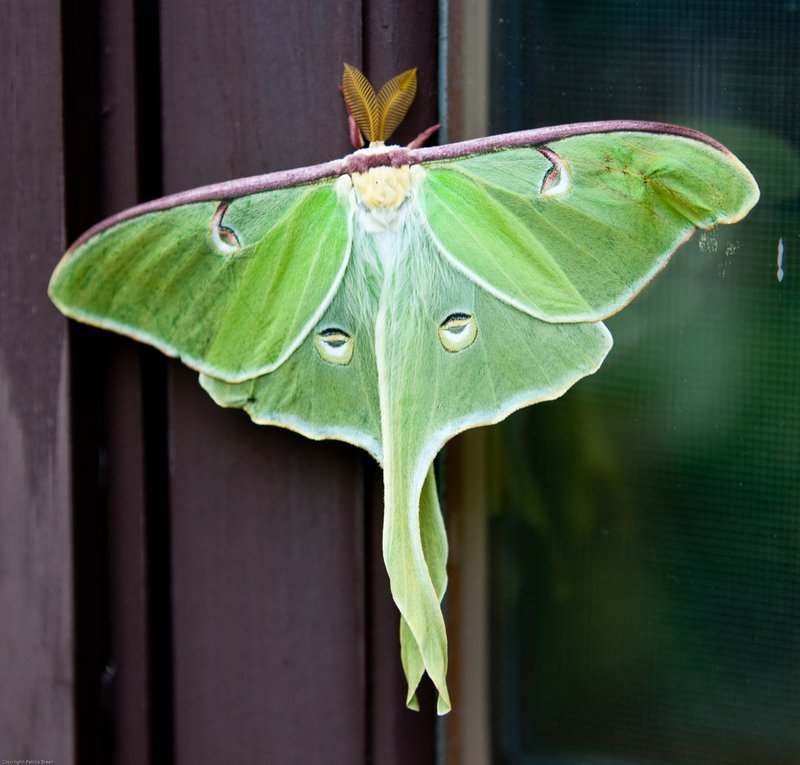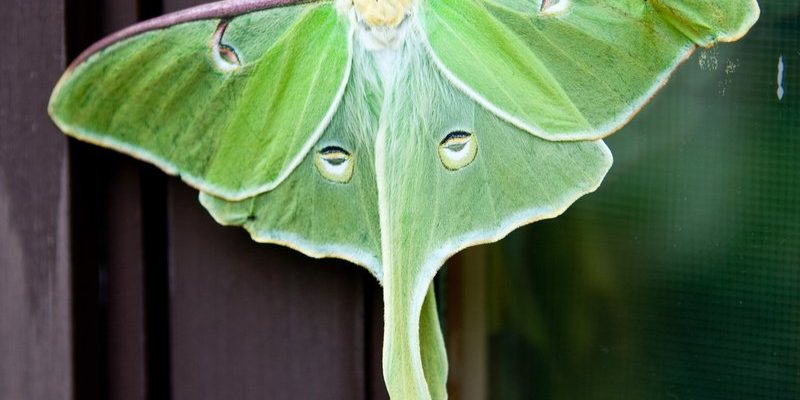
Let’s dive into the world of the Luna moth, exploring its behavior, characteristics, and whether it can pose any risks to us. You might be surprised by what you learn about these enchanting insects, so grab a cup of coffee, and let’s chat about it.
What is a Luna Moth?
The Luna moth, scientifically known as *Actias luna*, is a large moth native to North America. It boasts a wingspan that can measure up to 4.5 inches wide, making it one of the largest moths on the continent. Its pale green wings, adorned with yellow eyespots, serve as a beautiful camouflage against trees and foliage. Imagine a delicate leaf fluttering in the breeze—this is how the Luna moth blends seamlessly into its surroundings.
One key characteristic of the Luna moth is its life cycle. Like many moths, it undergoes complete metamorphosis, meaning it has four distinct stages: egg, larva (caterpillar), pupa, and adult. The caterpillar, which feeds on a variety of trees like walnut and birch, transforms into a pupa, where the moth develops inside a silky cocoon. When it finally emerges as an adult, it has only about a week to mate and lay eggs before it dies. This fleeting life creates a sense of urgency, adding to the moth’s mystique.
Do Luna Moths Bite or Sting?
Here’s the thing: Luna moths are completely harmless. They lack mouthparts suited for biting or stinging, so you don’t have to worry about being attacked. If you were to encounter one, it wouldn’t be crawling toward you with malicious intent. Instead, it’s probably just trying to find a mate or a safe place to rest.
You might see these moths fluttering around lights, like they’re drawn to the brightness, but they are not aggressive creatures. In fact, they would rather avoid humans altogether. So, if you spot a Luna moth in your backyard, consider it a friend, not a foe.
Are Luna Moths Poisonous?
Another concern you might have is whether Luna moths are poisonous. The good news is they are not toxic to humans or pets. In fact, they don’t have any harmful chemicals that could cause you any trouble. Many insects, like certain caterpillars, can have toxic defenses, but Luna moths aren’t one of them.
Their bright coloring might give the impression of being dangerous, as many vividly colored creatures in nature are toxic. But, in this case, the Luna moth’s beauty is all for show. They rely on camouflage to protect themselves from predators rather than any venom or poison.
The Role of Luna Moths in the Ecosystem
Luna moths play a significant role in their ecosystem. As larvae, they are part of the food chain, feeding on leaves and providing sustenance for other animals. Birds, in particular, enjoy munching on the caterpillars. When they become adults, Luna moths also contribute by pollinating various plants and flowers.
Their presence helps maintain ecological balance, allowing flowers and trees to thrive. So, the next time you see a Luna moth, appreciate its role in nature rather than viewing it as a threat. It’s one of those fascinating little connections that remind us that every creature has a purpose.
Myths and Misunderstandings About Luna Moths
A lot of people have misconceptions about Luna moths and other large moths in general. Some might think their size makes them dangerous, while others believe that their nocturnal habits are suspicious. Let’s address some of those myths.
For instance, many folks think that because they are so beautiful, they could somehow be hiding something sinister. But in reality, Luna moths are just as harmless as your average housefly. They don’t bite, sting, or carry diseases.
Another common myth is that their presence signifies bad luck or that they are associated with death. This folklore stems from the moth’s beautiful yet short life cycle, but it’s essential to remember that they are not omens—just creatures living their lives.
How to Enjoy Luna Moths Safely
If you find yourself enchanted by Luna moths, there are safe ways to enjoy their beauty. First, try creating a moth-friendly garden with native plants to attract them. They are drawn to night-blooming flowers, so incorporating those can increase your chances of spotting one.
Secondly, if you come across a Luna moth, consider taking a moment to watch it. Admire its unique features and beautiful flight patterns, but avoid the urge to touch it. Remember that these creatures are delicate, and handling them can be harmful to both you and the moth.
Instead of capturing them in a net or jar, snap a photo! This way, you can share your experience without disrupting their natural behavior.
In conclusion, Luna moths are not dangerous to humans at all. They lack the ability to bite or sting, and they are not toxic. Instead, they serve as a vital part of our ecosystem, showing us the beauty of nature’s design. So the next time you see a Luna moth, take a moment to appreciate its beauty from a safe distance. It’s just one of those little wonders that make the world around us so fascinating.
So, keep your eyes peeled for these marvelous moths, and remember: they’re here to flutter through life, not to cause harm. Enjoy the wonder they bring to our evenings!

